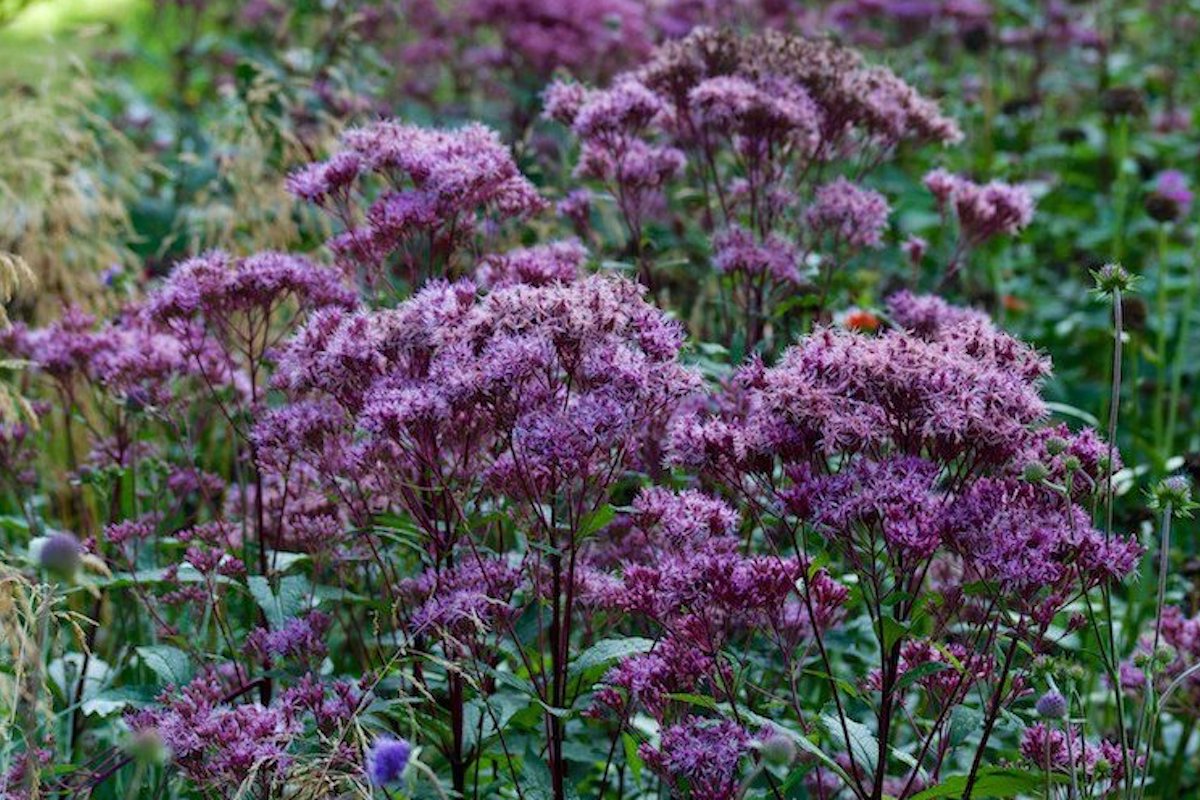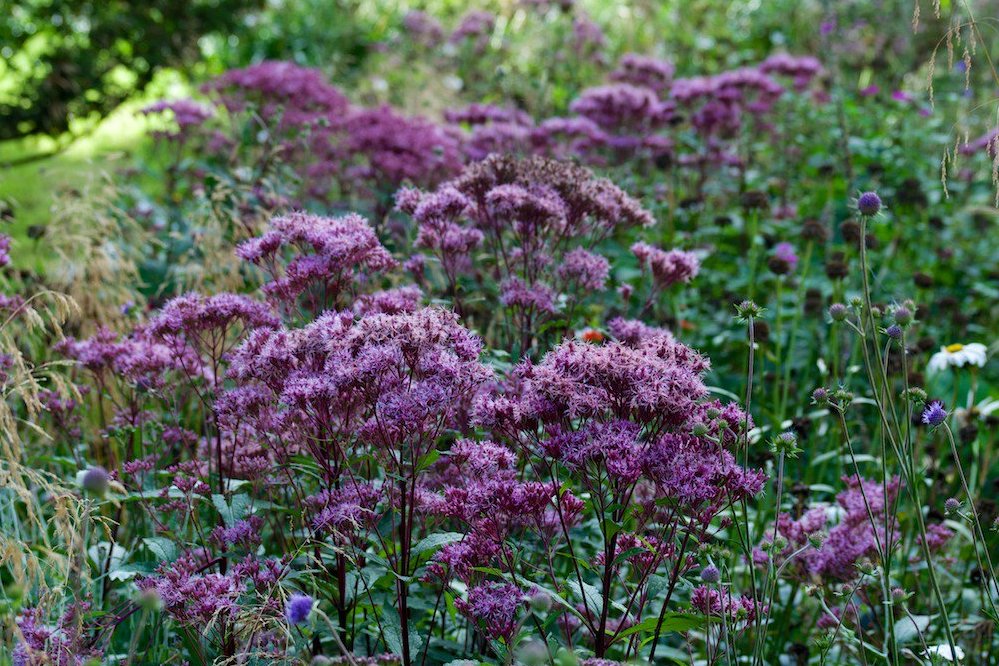Eupatorium maculatum (Atropurpureum Group) 'Purple Bush'
Approx. 0.5 litre pot
About this cultivar:
Eupatorium maculatum (Atropurpureum Group) 'Purple Bush' is a relatively compact cultivar, with dusky-pink flowers over a long period through summer and into autumn.
Atropurpureum is from the Latin term of 'deep purple, blackish-purple' referring to the stems. Normally the maculatum species (macualtum means spotted, referring to purple spots on the stems) has greenish stems.
- Position: Full sun, partial shade
- Soil: Almost any soil, grows well in Ballyrobert, like wet soil
- Flowers: July, August, September, Maybe October
- Other features: Royal Horticultural Society Award of Garden Merit (RHS AGM), Grows well in Ballyrobert
- Hardiness: H7 - Hardy in the severest European continental climates (< -20°C), Fully hardy - grows well in Ballyrobert!
- Habit: Clump forming, Columnar or Upright
- Foliage: Deciduous
- Height: 100 - 150cm (3.5 - 5 ft)
- Spread: 75 - 100cm (2.5 - 3.5 ft)
- Time to full growth: 2 to 5 years
- Plant type: Herbaceous Perennial, bog
- Colour: Green, purple, pink, red
- Goes well with: Echinacea, Rudbeckia, Helenium, Helianthus, Ornamental grasses, Veronicastrum, Roses, Larger Persicaria.
About this genus:
Eupatorium is a genus of flowering plants in the aster family, Asteraceae, containing from 36 to 60 species depending on the classification system. Most are herbaceous perennial plants growing to 0.5–3 m tall. A few are shrubs. The genus is native to temperate regions of the Northern Hemisphere. Most are commonly called bonesets, thoroughworts, Joe Pye Weed, or snakeroots. The genus is named for Mithridates Eupator, king of Pontus, who legend has it used one species as a poison antidote. Pontus was a historical Greek designation for a region on the southern coast of the Black Sea, located in modern-day eastern Black Sea Region of Turkey.
There is great variation in the genus. Eupatorium has at times been held to contain as many as 800 species, but many of these have been moved (at least by some authors) to other genera – so expect a name change soon!
Don’t eat it - side effects include muscular tremors, weakness, and constipation; overdoses may be deadly..
Eupatorium thrives in soils that are reasonably fertile and not too dry. In the wild it can be found in pastureland and at the edges of woodlands and streams, where it forms dense colonies. This might explain the inclusion of the word "weed" in its common name, Joe Pye weed. Legend has it Joe Pye was a Native American, who used this plant to cure fevers and American colonists used it to treat an outbreak of typhus.
In a garden setting it is better behaved, forming decent clumps but rarely straying.
Eupatorium is one of those plants that fall into the "naturalistic" category. They share the physical characteristics of wild plants and are often natives, albeit transplanted to another country. They tend to have simple flowers rather than highly bred doubles, and the overall form gives the impression that it is a wild plant rather than an exotic.
Because of these qualities Eupatorium is great as a conventional border perennial as well as a landscape plant, where there is a need to make a gentle transition from a highly gardened environment to the natural landscape beyond. We love it.
Great with other late flowering perennials such as Echinacea, Rudbeckia, Helenium, Helianthus, Ornamental grasses, Veronicastrum, Roses, Larger Persicaria




